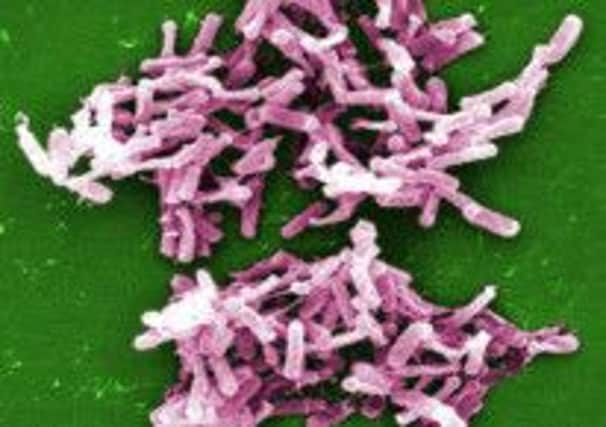Cases of deadly C diff soar in Scottish hospitals


Figures reveal that between July and September last year, rates of the bug increased by 19 per cent in patients over 65 compared to the previous three months. Levels in younger patients – aged 15 to 65 – were up 35 per cent, according to Health Protection Scotland (HPS).
It follows previous sharp declines in C difficile, which had been falling since 2008.
Advertisement
Hide AdAdvertisement
Hide AdHPS said the reason for the rise in cases was unknown, but that it might be linked to the inappropriate use of antibiotics, which can increase the risk of the bug taking hold, and failures in infection control. The Scottish Government pointed to large falls in C difficile in recent years, as well as figures showing MRSA cases dropping to their lowest ever level.
The HPS figures revealed that between July and September, 351 cases of C difficile were recorded in the over-65s – the group most at risk from the infection, which can lead to death in the most serious cases. This amounted to a rate of 40.7 cases per 100,000 hospital bed days, up from 34.2 the previous quarter.
Ten of Scotland’s 14 health boards saw cases increase, with the most significant rise in NHS Highland, where the rate more than doubled. The board is monitoring the increase through a new action group, the report said. Most boards also saw rising rates compared to the previous 12 months. Among patients under 65, the rate of cases increased from 32.4 per 100,000 bed days to 43.9 in July to September, with rates up in 11 health boards compared to the previous quarter. Most boards also had higher incidence rates compared to the previous 12 months, particularly Lanarkshire, Lothian and Tayside.
However, HPS also pointed out that levels overall in 2012/13 were down almost 8 per cent for over-65s compared to 2011/12, while they were down over 11 per cent in the younger group.
The report said a pattern of rising rates in the third quarter of the year had been seen, though it was not clear why this happened. HPS added: “It is unknown what is driving the increase in numbers but this may be related to inappropriate prescribing and/or failure to implement and sustain infection prevention and control measures.”
The Scottish Government said the figures showed that the number of people contracting C difficile had “dramatically” fallen by 80 per cent since records began in 2007, despite the rise in the last three months. The figures also revealed that levels of MRSA were at a record low, with a 17 per cent drop in cases between July to September compared to the previous quarter. Just 29 cases were reported.
Health secretary Alex Neil said: “With this good practice firmly in place we want to remind staff, patients and visitors that they all have a role to play in making sure good standards of cleanliness and hand hygiene are maintained.”